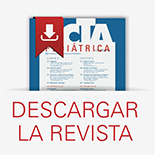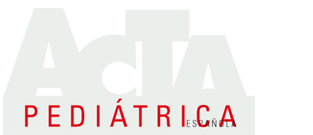Volumen 67 - Número 1 - Enero 2009
Publicado en
Nutrición infantil
Hábitos de alimentación y de actividad física. Un año de intervención en la escuela. Estudio piloto
Dietary habits and physical activity after one year of health intervention in the school: a pilot study
M.P. Espejo García1, M.D. Vázquez García2, V. Benedí Curiel2, J.C. López Lacoma31Pediatra. 2Médico de familia. 3Enfermero. Centro de Salud de Barrio Peral. Cartagena (Murcia)














